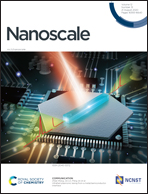Anti-Stokes photoluminescence study on a methylammonium lead bromide nanoparticle film†
Abstract
Photon cooling via anti-Stokes photoluminescence (ASPL) is a promising approach to realize all-solid-state cryo-refrigeration by photoexcitation. Photoluminescence quantum yields close to 100% and a strong coupling between phonons and excited states are required to achieve net cooling. We have studied the anti-Stokes photoluminescence of thin films of methylammonium lead bromide nanoparticles. We found that the anti-Stokes photoluminescence is thermally activated with an activation energy of ∼80 meV. At room temperature the ASPL up-conversion efficiency is ∼60% and it depends linearly on the excitation intensity. Our results suggest that upon further optimization of their optical properties, the investigated particles could be promising candidates for the demonstration of photon cooling in thin solid films.



 Please wait while we load your content...
Please wait while we load your content...